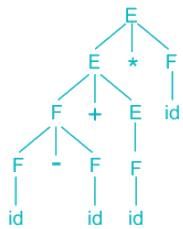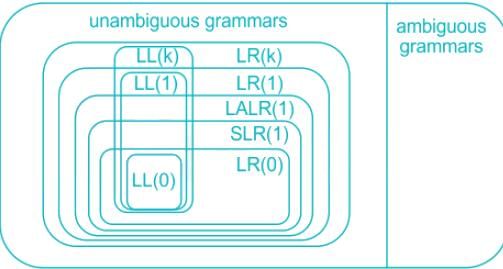Predictive Top Down Parsing - Computer Science Engineering (CSE) MCQ
10 Questions MCQ Test - Predictive Top Down Parsing
Which of the following derivations does a top-down parser use while parsing an input string?
Given the following expression grammar:E -> E * F | F + E | FF -> F – F | idWhich of the following is true?
Which one of the following is true at any valid state in shift-reduce parsing?
In the context of abstract-syntax-tree and control-flow-graph.Which one of the following is true?
List-I List-II
A. Lexical analysis 1. Graph coloring
B. Parsing 2. DFA minimization
C. Register allocation 3. Post-order traversal
D. Expression evaluation 4. Production tree
A B C D
Which of the following statements is/are correct?
A. SLR parser is more powerful than LALR parser.
B. Canonical LR parser is more powerful than LALR parser.
C. LALR parser is more powerful than Canonical LR parser.
Consider the following grammar G.
S → F ⎪ H
F → p ⎪ c
H → d ⎪ c
Which one is true?
S1: All strings generated by G can be parsed with help of LL (1).
S2: All strings generated by G can be parsed with help of LR (1).
What is the maximum number of reduce moves that can be taken by a bottom-up parser for a grammar with no epsilon- and unit-production to parse a string with n tokens?





















